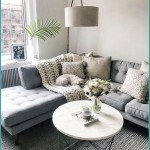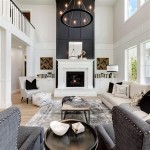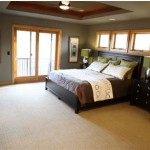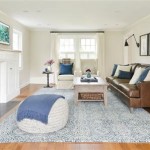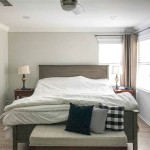Decorating a Living Room with a TV: A Comprehensive Guide
The living room, often considered the heart of the home, serves multiple purposes. It is a space for relaxation, socializing, and entertainment. A central feature in many living rooms is the television, which can become a focal point that significantly influences the room's overall aesthetic and functionality. Successfully integrating the TV into the room’s design requires careful planning, considering factors such as viewing angles, furniture placement, and overall style coherence. This guide provides a comprehensive approach to decorating a living room with a television, ensuring an aesthetically pleasing and comfortable environment.
Planning and Preparation: Laying the Groundwork
Before commencing any decorating work, thorough planning is crucial. The initial step involves assessing the available space and determining the optimal placement for both the television and the seating arrangement. Measure the room's dimensions to evaluate the size of the TV that will be suitable for the space. A TV that is too large can dominate the room and create viewing strain, whereas one that is too small might make viewing difficult. Consider the natural light sources and how they impact the screen visibility.
Next, define the focal point of the room. While the TV is frequently the primary focus, other elements such as a fireplace, a large window with a scenic view, or a unique piece of artwork can also function as a focal point. If the television is the primary focus, its placement will dictate the arrangement of other furniture pieces. If another element is emphasized, the TV's placement must complement this focal point. Finally, consider the electrical outlets and any necessary wiring for cable boxes, gaming consoles, and sound systems. Properly concealing these wires will improve the overall aesthetic appeal.
Optimal TV Placement and Viewing Considerations
The ideal placement of the television directly influences the viewing experience. The primary concern is the viewing angle and distance. The recommended viewing distance is typically 1.5 to 2.5 times the diagonal screen size, as a general rule, but this can vary based on personal preference. Consider an average viewing distance of 8 feet (2.4 meters) and a 55-inch TV, which would be a good fit for most living rooms.
The optimal height for the TV is also critical. Position the center of the screen at eye level when seated. This minimizes neck strain and enhances comfort. If the screen is mounted above a fireplace, ensure it is not too high, as this can lead to uncomfortable viewing. Tilting the TV slightly downwards can help mitigate this issue. Consider the natural light sources in the room and position the TV to avoid direct sunlight, which can cause glare and reduce visibility. If direct sunlight is unavoidable, consider using curtains, blinds, or positioning the TV at an angle to minimize glare.
Furniture Arrangement and Flow
The furniture arrangement around the television significantly impacts the overall layout and functionality of the living room. The seating arrangement should directly face or angle towards the TV for clear viewing. A sectional sofa or a combination of individual sofas and chairs often works well. Ensure there is adequate space between the seating and the TV to maintain a comfortable viewing distance. The arrangement should promote conversation and interaction, even when the TV is not in use.
Coffee tables, side tables, and other accent furniture should complement the seating arrangement. The coffee table should be within easy reach of the seating. Side tables can provide space for lamps, drinks, and remote controls. Consider integrating storage solutions such as a media console or entertainment center. Media consoles offer space to store media devices, and they may also house the television. This also provides storage for games, movies, and other living room essentials. Finally, ensure the layout facilitates easy movement within the room. Avoid obstructing pathways or creating cramped spaces.
Integrating the TV into the Room's Decor
The TV should not be an isolated element but integrated seamlessly into the overall décor of the room. The color scheme of the wall behind the TV significantly influences its visual impact. A neutral wall color, such as white, gray, or beige, helps the TV blend in and reduces the risk of distractions. Darker wall colors can make the TV appear more prominent, which would be beneficial for its appearance.
Consider incorporating a TV console or media cabinet that complements the room's style. These units can provide storage and help to hide unsightly wires and cables. Surrounding the TV with artwork, shelving units, or decorative objects can further integrate it into the design. Avoid cluttering the area, however, and ensure these elements enhance the overall aesthetics without distracting from the viewing experience. Consider a picture frame around the TV to make it look like a piece of art when it is turned off.
Lighting Considerations
Lighting plays a critical role in creating a comfortable and functional living room environment, especially when there is a TV. Harsh lighting can cause glare on the TV screen and strain the eyes. Soft ambient lighting is ideal for watching television. In addition to overhead lighting, incorporate table lamps and floor lamps to provide diffused and focused light sources.
Dimmer switches are highly beneficial, allowing for adjusting the light intensity based on the time of day and viewing needs. Consider the direction of the light sources and position them to avoid reflecting on the television screen. Backlighting the TV with LED strips or a bias lighting kit can reduce eye strain and improve the perceived contrast of the image. This will allow for comfortable viewing from various angles.
Acoustics and Sound Systems
In a well-designed living room, the sound experience is as important as the visual experience. A high-quality sound system will significantly enhance the viewing experience, especially when watching movies or listening to music. Soundbars, surround sound systems, and integrated audio systems are all viable options, based on individual needs and preferences.
Position speakers strategically to create an immersive sound experience. Conceal speaker wires to maintain a clean and organized look. The acoustics of the room will influence the sound quality. Hard surfaces, such as hardwood floors and bare walls, can create echoes, while soft surfaces, such as rugs, curtains, and upholstered furniture, will absorb sound and improve the overall acoustics. Addressing these acoustic elements ensures an optimal audio experience and creates the ideal atmosphere.
20 Small Tv Room Ideas That Balance Style With Functionality
The Right Way To Design Around A Tv Architectural Digest
42 Tv Room Ideas For Binge Watching In Comfort And Style
Ideas For Decorating A Tv Wall
9 Creative Ways To Incorporate A Tv Into Your Room S Design
11 Tv Room Ideas For Limited Spaces Designcafe
Designing Around Your Tv Like A Pro Cristina Depina Interior Design Room Ideas Cozy Simple Living Small Rooms
23 Small Living Room With Tv Ideas To Maximize Your Space
15 Creative Small Living Room Tv Ideas Swyft
20 Small Tv Room Ideas That Balance Style With Functionality
Related Posts
